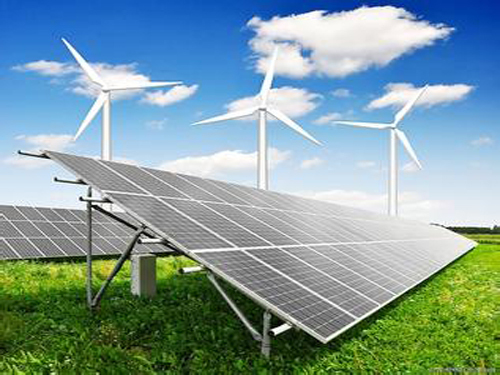
Proponents of nuclear power have already begun to predict the revival of nuclear power, but globally, this type of power generation model has been stopped for several years. On the contrary, renewable energy sources have continued to expand. Although there is still a long way to go, the momentum of continued expansion of renewable energy is hard to resist. The World Observatory Institute, an international research institute headquartered in the United States, recently released a report saying that the proportion of nuclear energy in global electricity production has dropped from 17.6% at the peak of 1996 to 10.8% in 2013; In 2000, energy accounted for 18.7% of global electricity production. By 2012, it had increased to 22.7%.
The Worldwatch Institute cited statistics from the International Atomic Energy Agency (IAEA), the authoritative body for the global nuclear power industry. According to IAEA, since the mid-1950s, the global nuclear power industry has reached a peak in 2010, generating 375.3GW of electricity. In the following years, the amount of power generation continued to decline and it dropped to 371.8GW by 2013. According to the analysis of the World Economic Research Institute, the main reason for the reduction in the generation of nuclear power is the global economic recession, and the question of how to deal with nuclear waste remains unresolved. These unfavorable factors equate to global brakes on the nuclear power industry.
In stark contrast to the downturn in nuclear power, renewable energy sources such as wind power and solar energy are on a trajectory of soaring momentum. The momentum of rapid development is similar to nuclear power in the 1970s and 1980s. The total installed capacity of wind power in the world reached 320 GW in 2013, which is equivalent to the installed capacity of nuclear power in 1990. According to the report, the global installed PV capacity in 2013 was 140 GW. Although the volume is still relatively small, the growth rate is very fast.
From the perspective of the ability to attract investment, wind power, solar photovoltaic, and other renewable energy sources have far exceeded the nuclear power in recent years. In its report, the Worldwatch Institute quoted the International Energy Agency (IEA) as saying that between 2000 and 2013, nuclear power attracted an annual investment of about 8 billion U.S. dollars. During this period, the annual investment in wind power is 43 billion U.S. dollars. In U.S. dollars, solar photovoltaic is 37 billion U.S. dollars.
However, the report also pointed out that the focus of technology investment research in individual countries is on nuclear power, such as the United States, Canada, Japan, and South Korea. Over the past four decades, nuclear power has occupied the largest share of public spending on energy research and development in the above countries. However, the proportion of nuclear power technology R&D expenditures is declining year by year. Take the United States as an example. In 1974, 73.6% of U.S. energy R&D spending went to nuclear power, and in 2012, the proportion has dropped to 26%.
The report believes that unlike nuclear power plants with large volumes and time-consuming construction, wind power and solar power generation vary greatly in scale of deployment, and the required construction period is relatively short. Therefore, for most countries, the development of wind power and solar energy Power generation is a practical and affordable choice. According to the report, the total number of countries developing nuclear power in the world is 31. At present, at least 85 countries are developing wind power.
The report concluded that the possibility of a large-scale revival of global nuclear power is almost impossible. At this time, renewable energy is on the right and fast development path.
The lcd projector is the product of the combination of liquid crystal display technology and projection technology. It uses the electro-optic effect of liquid crystal to control the transmittance and reflectivity of the liquid crystal unit through the circuit, thereby producing different gray levels and as many as 1670 million colors. Beautiful image. The main imaging device of LCD projector is liquid crystal panel. Led projector, generally refers to the light source of the projector is LED light source, the brightness is not high, within 500 lumens. The difference between dlp and led, most of them are in Projection field to distinguish.
lcd home projector,led lcd home projector,best home lcd projector,lcd home theatre projectors,best lcd home theater projector
Shenzhen Happybate Trading Co.,LTD , https://www.happybateprojector.com